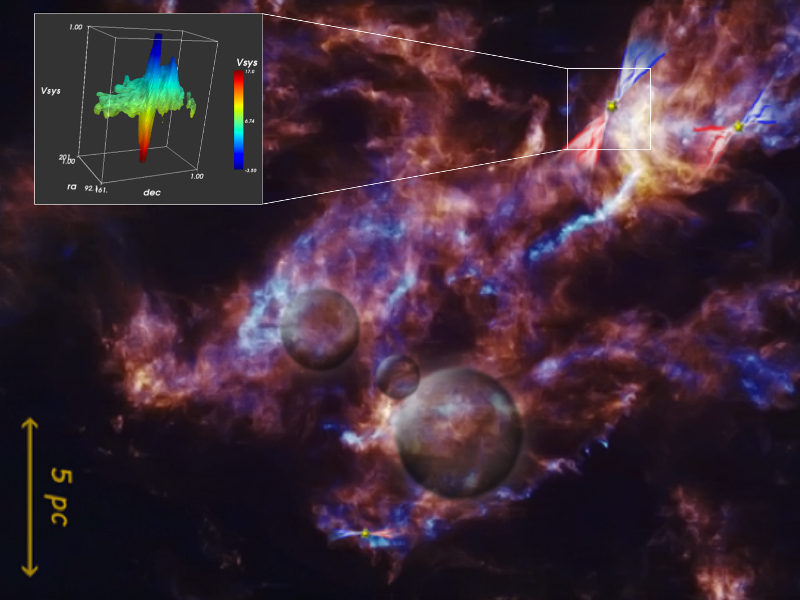| EPoS Contribution |
|
Probing Astrophysical Turbulence
Di Li NAOC, Beijing, CN | |
| We conducted a comprehensive search of dynamic gas structures in Taurus. The 100 dSup>2 CO survey with more than 200 million voxels is ideal for studying molecular cloud turbulence. Our main conclusion is that the stellar feedback, though orders of magnitude smaller than gravitational potential, is sufficient for sustaining turbulence at pc scale. This is puzzling various aspects. In a related work, we developed a new observation technique (Core-Velocity-Dispersion: CVD), which has the potential to provide a direct measurement of turbulence dissipation rate. I will introduce the formalism connecting CVD to turbulence structural functions and its implication for measuring astrophysical turbulence. | |
 | |
| Caption: The background images consist of the integrated intensities of the J=1-0 transitions of 12CO(red) and 13CO(blue). The blue and red sectors represent outflows and the transparent spheres represent the bubbles. A representative PV cube is also presented. | |
|
Key publication
Suggested Session: Turbulence | |

